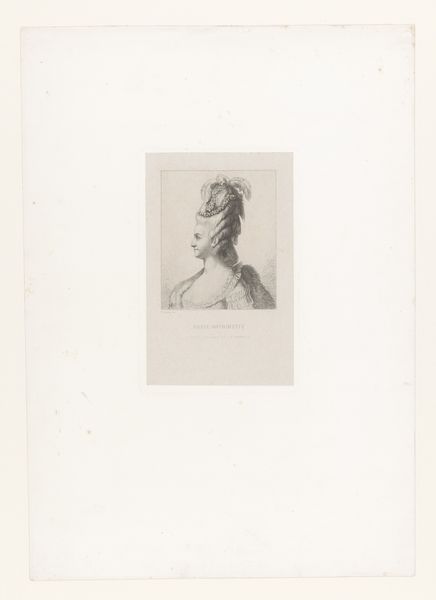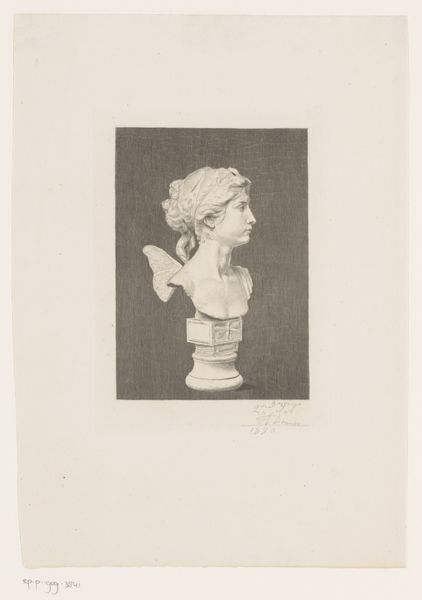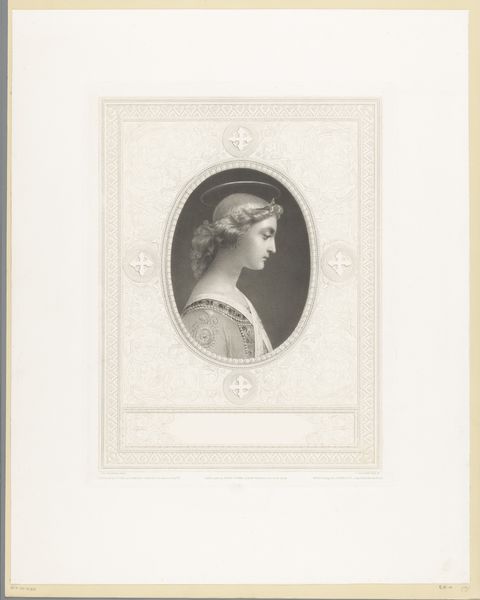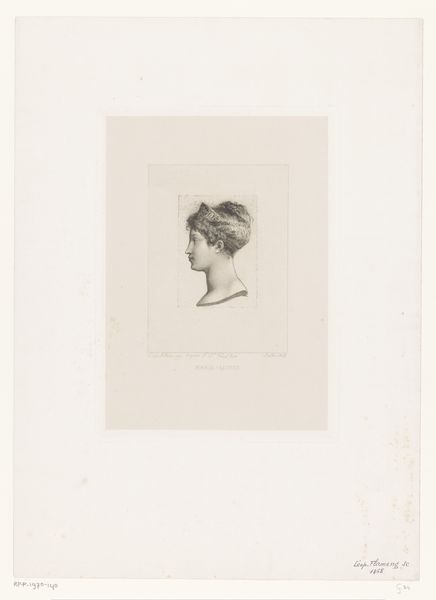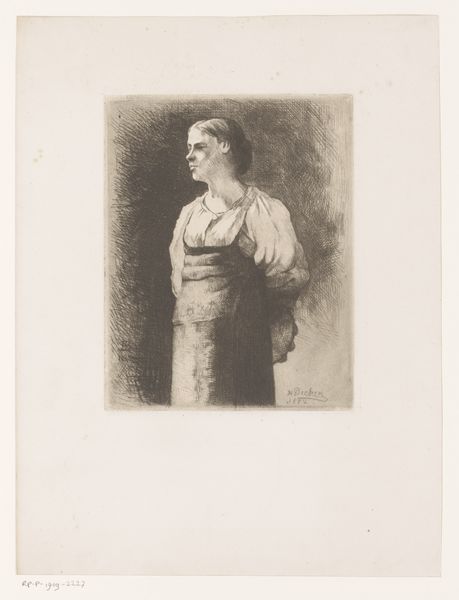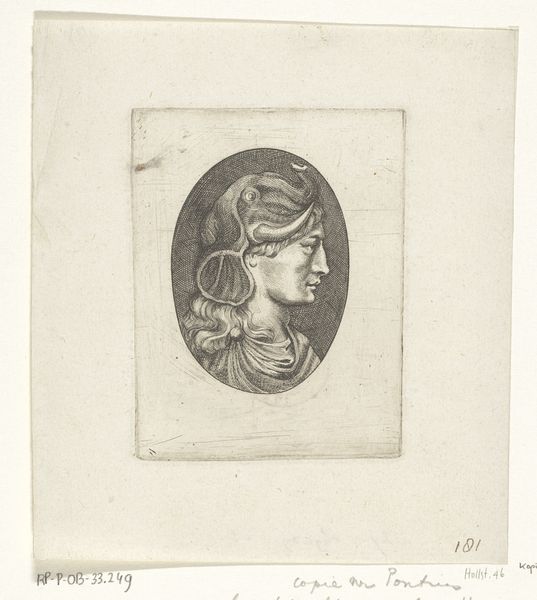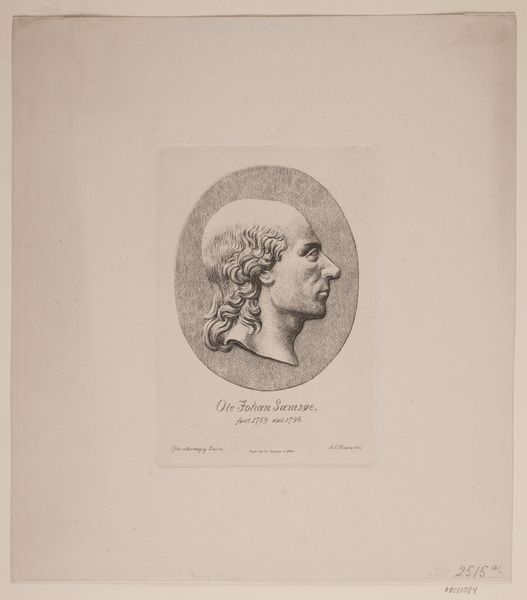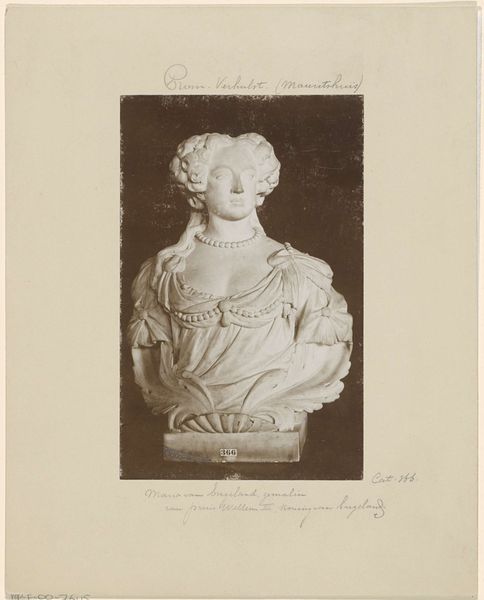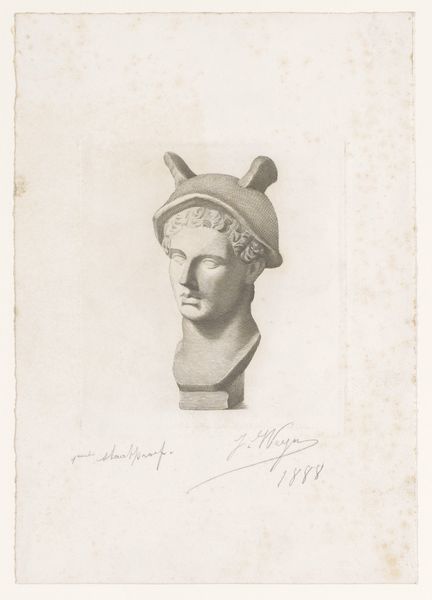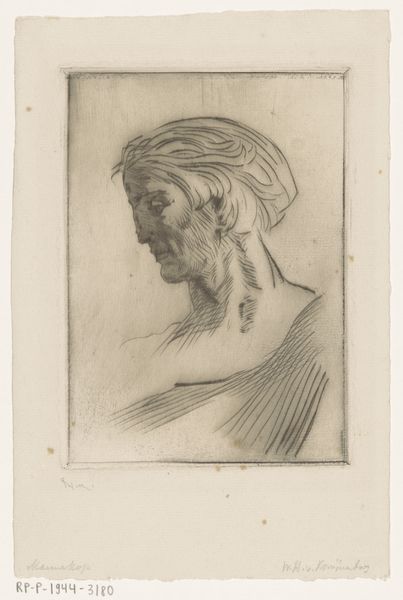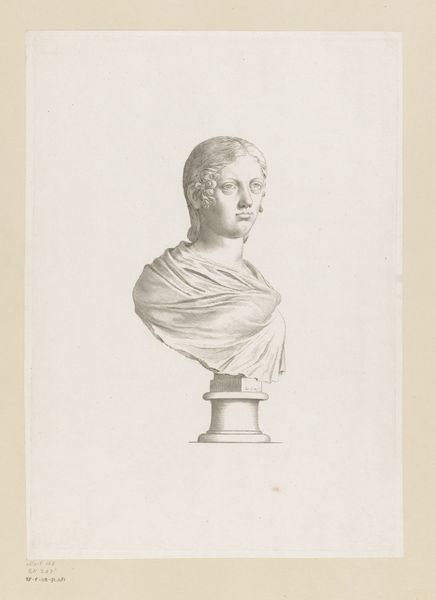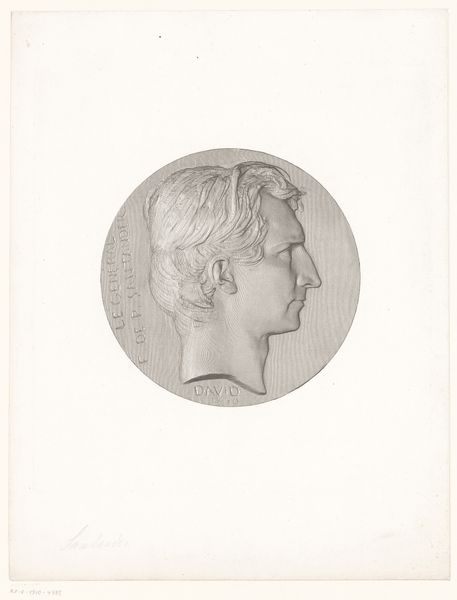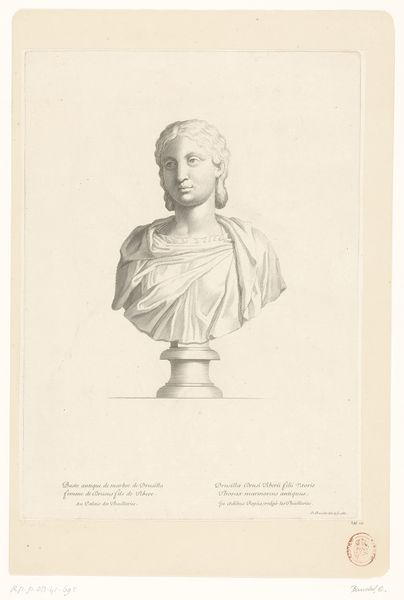
drawing, pencil
portrait
pencil drawn
drawing
light pencil work
pencil sketch
classical-realism
ancient-mediterranean
pencil
pencil work
academic-art
Dimensions: height 198 mm, width 150 mm
Copyright: Rijks Museum: Open Domain
Curator: Here we have Eduard Augustyns's "Bust of Minerva," created before 1909, rendered in pencil on paper. It presents a classical subject in a seemingly straightforward academic style. What strikes you initially? Editor: Austere, almost severe. The light pencil work creates a sense of delicate precision, yet the figure emanates an unmistakable coolness, perhaps even detachment. It evokes the entrenched power structures that often cast women—even goddesses—into rigid, symbolic roles. Curator: Precisely! Note how Augustyns masterfully uses hatching and shading to define Minerva’s form, creating a sense of depth and volume despite the lightness of the medium. The geometric precision of the helmet, contrasting with the softer drape of the toga, offers an intriguing visual tension. We are seeing a translation, almost an archaeology, of classical form. Editor: That tension is palpable, a subtle but telling friction between the hard, militaristic connotations of her helmet and the draped toga which implies knowledge, both shielding her from the front, but failing to protect her shoulders and the rest of her. One could almost read the rendering of Minerva as a critical commentary on the limitations placed on female agency, even within the supposedly enlightened realm of wisdom and warfare. Is the academic style itself a method for controlling her power and representation? Curator: A compelling perspective. Augustyns, through his expert command of line and form, has immortalized Minerva, but on paper. Note the absence of colour adds to the seriousness of the piece and how this allows you to look deeply into the light reflected and rendered as shading. Editor: Indeed. And isn’t that precisely the point? The artwork exists as a symbol caught within layers of meaning, of skill and interpretation and even academic institutions who teach particular skill. Perhaps by acknowledging its context we can break through this artifice to reveal more about societal views towards leadership and legacy, the cost to people as we put them up on pedestals of heroism, greatness, genius and martyrdom. Curator: A nuanced analysis. This close look has transformed what initially appeared to be a simple classical portrait into a complex mirror reflecting enduring societal tensions and their continued translation through artistic media. Editor: Exactly. It underscores how the "classics" continue to be points of both aspiration and contention in our contemporary discourse.
Comments
No comments
Be the first to comment and join the conversation on the ultimate creative platform.
